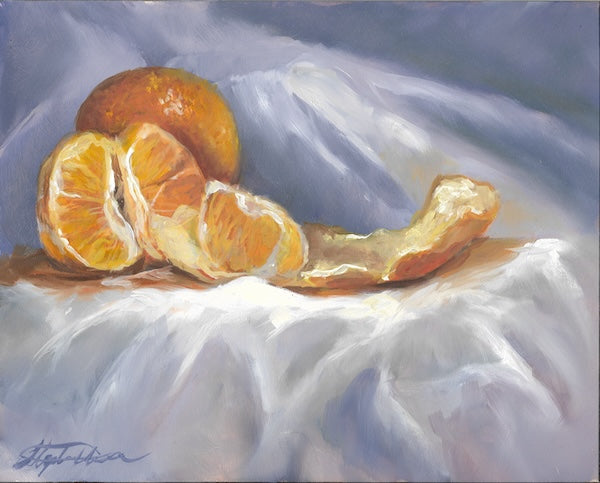Unique Decor Ideas: Oil Paintings for Sale
Unique Decor Ideas: Oil Paintings for Sale
Blog Article
Checking out Everything About Oil Paintings: A Guide to Understanding Their Beauty and Worth
Oil paints have mesmerized target markets for centuries, offering a peek right into the imaginative proficiency of numerous periods. Their abundant background is intertwined with innovative strategies and profound emotional expression. Comprehending the materials and approaches behind these art work can enhance recognition. Furthermore, the market for oil paintings offers possibilities for capitalists and collection agencies alike. As one explores this remarkable world, the inquiry develops: what makes an oil painting absolutely useful?
The Background of Oil Paint: A Journey With Time
Oil paint has origins that date back to old times, it truly thrived throughout the Renaissance, when musicians found its versatility and rich shade potential. Early instances can be mapped to the 7th century, with methods progressing notably across societies. The medium ended up being noticeable in Northern Europe in the 15th century, especially via the works of artists like Jan van Eyck, who originated its usage for comprehensive realistic look and dynamic colors. This duration marked a departure from tempera paints, enabling higher deepness and texture. As oil painting spread, it affected plenty of artists, causing work of arts by renowned figures such as Leonardo da Vinci and Rembrandt. The tool's tradition proceeds, forming the art world well into modern-day times.
Recognizing Oil Paints: Materials and Techniques
As musicians discover the globe of oil paints, they encounter a diverse variety of products and strategies that specify this tool. The key components of oil paint include pigments, which provide color, and drying oils, such as linseed, that bind the pigments and assist in application. Various additives can change the paint's structure and drying time, improving convenience. Techniques like glazing, where transparent layers are accumulated, and impasto, which includes applying thick paint, enable various aesthetic results. Furthermore, the usage of brushes, scheme blades, and even fingers can develop special appearances and surfaces. Comprehending these techniques and products enables artists to fully share their creativity and attain the desired influence in their art work.
The Function of Color in Oil Paintings
Shade plays a crucial function in oil paintings, affecting both visual appeal and psychological resonance. Comprehending color theory essentials, including the relationships between hues, can boost an artist's capacity to convey state of mind and atmosphere. In addition, grasping shade mixing strategies enables for greater deepness and richness in a paint's combination.

Color Concept Essential
Recognizing color concept is essential for musicians dealing with oil paints, as it forms the structure for producing aesthetically interesting and harmonious compositions. Shade theory encompasses the research of exactly how shades communicate, the shade wheel, and the connections in between main, secondary, and tertiary colors. Musicians make use of corresponding colors to boost contrasts and develop focal factors, while analogous shades promote unity and cohesiveness within an item. Additionally, the principles of warm and cool colors affect the perception of deepness and area in a painting. Realizing these principles permits artists to control shade efficiently, directing the visitor's eye and communicating their desired message. Proficiency of shade concept inevitably enhances an artist's capacity to convey feelings and ideas with their work.
Emotional Influence of Shade
The psychological influence of shade in oil paintings plays a vital duty in how visitors attach and perceive with artwork. Colors stimulate details sensations and moods, affecting the viewer's mood. Warm shades like oranges and reds can produce a feeling of heat and power, while amazing tones such as blues and eco-friendlies typically stimulate calmness or self-questioning. Artists tactically select color combinations to improve narrative elements, directing the audience's emotional journey. The saturation and contrast of colors further amplify these results, attracting interest and producing emphasis. Ultimately, the interplay of shades in oil paints not only enhances their visual allure yet likewise functions as an effective tool for emotional expression, enhancing the viewer's experience and analysis.
Shade Combining Techniques
While lots of aspects of oil paint add to the general composition, understanding shade mixing techniques is crucial for attaining preferred impacts and depth. Color blending can be approached through numerous techniques, including the subtractive and additive procedures. Additive mixing entails integrating colors of light, while subtractive blending relies upon pigments, where colors mix to create brand-new shades. Musicians typically utilize a minimal combination to create harmonious jobs, understanding the partnerships between primary, secondary, and tertiary shades. Methods such as glazing and scumbling additionally enhance deepness and luminance. By skillfully mixing shades, an artist can evoke feelings, create focal points, and attain a sense of realism, ultimately boosting the painting's aesthetic and psychological influence.
Famous Oil Painters and Their Iconic Works

Famed for their proficiency of shade and method, oil painters have actually produced a few of one of the most celebrated art work in history. Renowned artists like Vincent van Gogh mesmerized target markets with his stirring brushwork in "Starry Evening," while Claude Monet's "Perception, Daybreak" laid the foundation for Impressionism. Leonardo da Vinci's "Mona Lisa" continues to be a long-lasting icon of artistic genius, showcasing his skill in capturing human expression. Rembrandt's "The Evening Watch" shows his ingenious use of light and shadow. Other noteworthy numbers include Pablo Picasso, who revolutionized modern art with his vibrant trial and error in works like "Les Demoiselles d'Avignon," and Georgia O'Keeffe, whose vibrant representations of landscapes and flowers aided specify American modernism. Each artist's unique design added considerably to the oil painting landscape.
How to Evaluate the Top Quality of an Oil Paint
Evaluating the top quality of an oil painting involves a mindful evaluation of craftsmanship strategies, along with an analysis of shade and structure. Observing brushwork, layering, and the application of paint can reveal the musician's skill level. Furthermore, the interplay of shades and the general arrangement of components contribute considerably to the paint's aesthetic worth.
Examining Craftsmanship Strategies
A meticulous assessment of workmanship techniques is essential for establishing the high quality of an oil paint. Evaluators need to first check out the application of paint; thick, textured brushstrokes might suggest an experienced hand, while extremely uniform applications might show a lack of deepness. oil paintings for sale. The layering technique is likewise essential; the presence of lusters and differed thickness can improve luminance and complexity. Furthermore, the top quality of the materials utilized, such as the canvas and pigments, plays a substantial role in longevity and overall aesthetic. Focus to information in aspects like edges and shifts between shades mirrors the artist's commitment to their craft. Eventually, these strategies add to the painting's emotional effect and market price, working as indications of the artist's ability and intent
Assessing Color and Make-up
While assessing the high quality of an oil paint, one have to concentrate on the interplay of color and structure, as these components are fundamental to the artwork's overall impact. Shade options can establish and evoke emotions mood; as a result, the musician's scheme need to be examined for harmony and contrast. A well-balanced composition guides the visitor's eye and produces a feeling of unity. Musicians usually utilize methods like the policy of thirds or leading lines to enhance visual rate of interest. Furthermore, using light and shadow can add depth, enhancing the three-dimensionality of the painting. Inevitably, an effective oil paint weds color and structure, involving the visitor and welcoming a deeper gratitude of the artist's vision and method.
Taking care of and Preserving Oil Paintings
Correct treatment and conservation of oil paints is vital for maintaining their integrity and durability. To protect these artworks, it is vital to display them away from straight sunshine, which can create fading and staining. Keeping a secure setting with controlled temperature level and moisture more help in stopping damage. Cleansing must be done gently making use of a soft, completely dry fabric, avoiding any kind of rough chemicals that can hurt the paint or varnish. Normal assessments for signs of deterioration, such as fracturing or flaking, are advisable. When transporting or storing oil paintings, correct cushioning and framework are required to stay clear of physical damage. Inevitably, persistent treatment adds to the visual allure and worth of oil paintings with time.
The Market for Oil Paints: Spending and accumulating
Comprehending the marketplace dynamics for oil paintings is crucial for collection agencies and capitalists alike. The oil paintings for sale value of these art work is affected by various elements, consisting of the musician's credibility, historic importance, and existing patterns. Collection agencies typically look for pieces that reverberate personally while taking into consideration prospective admiration in value. Public auctions and galleries act as primary places for trading, with rates varying based on demand and rarity. Spending in oil paints calls for study right into the marketplace, along with an understanding of credibility and provenance. Additionally, emerging musicians may provide possibilities for significant returns, while developed names can regulate high rates. On the whole, a tactical technique to collecting can yield both aesthetic pleasure and financial incentives.

Regularly Asked Concerns
What Are the Ecological Effects of Oil Painting Products?
The environmental influences of oil painting materials consist of the launch of unpredictable natural substances (VOCs), harmful waste generation, and resource extraction for pigments. These elements add to contamination and eco-friendly degradation, elevating issues among ecologically aware artists and consumers.
Exactly How Do Different Canvases Influence Oil Paint Outcomes?
Different canvases affect oil paint results considerably. Absorbency, surface area, and appearance top quality can modify paint application, drying out times, and shade vibrancy. Musicians typically pick specific canvases to accomplish preferred results and enhance their artistic expression.
Can Oil Paintings Be Brought Back if Harmed?
Oil paintings can certainly be recovered if harmed. Expert conservators utilize various strategies to repair tears, tidy surface areas, and address discoloration, guaranteeing that the art work maintains its original beauty and worth for future generations.
What Are the Indications of an Original Oil Paint?
The indications of an initial oil paint include noticeable brush strokes, texture variants, and an unequal canvas weave (oil paintings for sale). Additionally, credibility may be validated with provenance, trademarks, and the existence of a varnish layer distinct to oil mediums
How Has Innovation Influenced Modern Oil Paint Techniques?
Innovation has considerably influenced modern oil paint techniques by introducing electronic tools for preparation, enhanced products for texture and long life, and online systems for sharing and selling art, thus increasing artists' innovative opportunities and audience get to. Oil paint has roots that date back to old times, it truly grew throughout the Renaissance, when artists found its convenience and rich shade possibility. The emotional influence of color in oil paintings plays an essential function in how audiences connect and view with art work. While several aspects of oil painting add to the total composition, mastering shade mixing techniques is vital for attaining desired effects and deepness. Assessing the quality of an oil paint involves a mindful assessment of workmanship methods, as well as an analysis of color and composition. While assessing the top quality of an oil painting, one have to focus on the interaction of color and make-up, as these aspects are basic to the art work's total influence.
Report this page